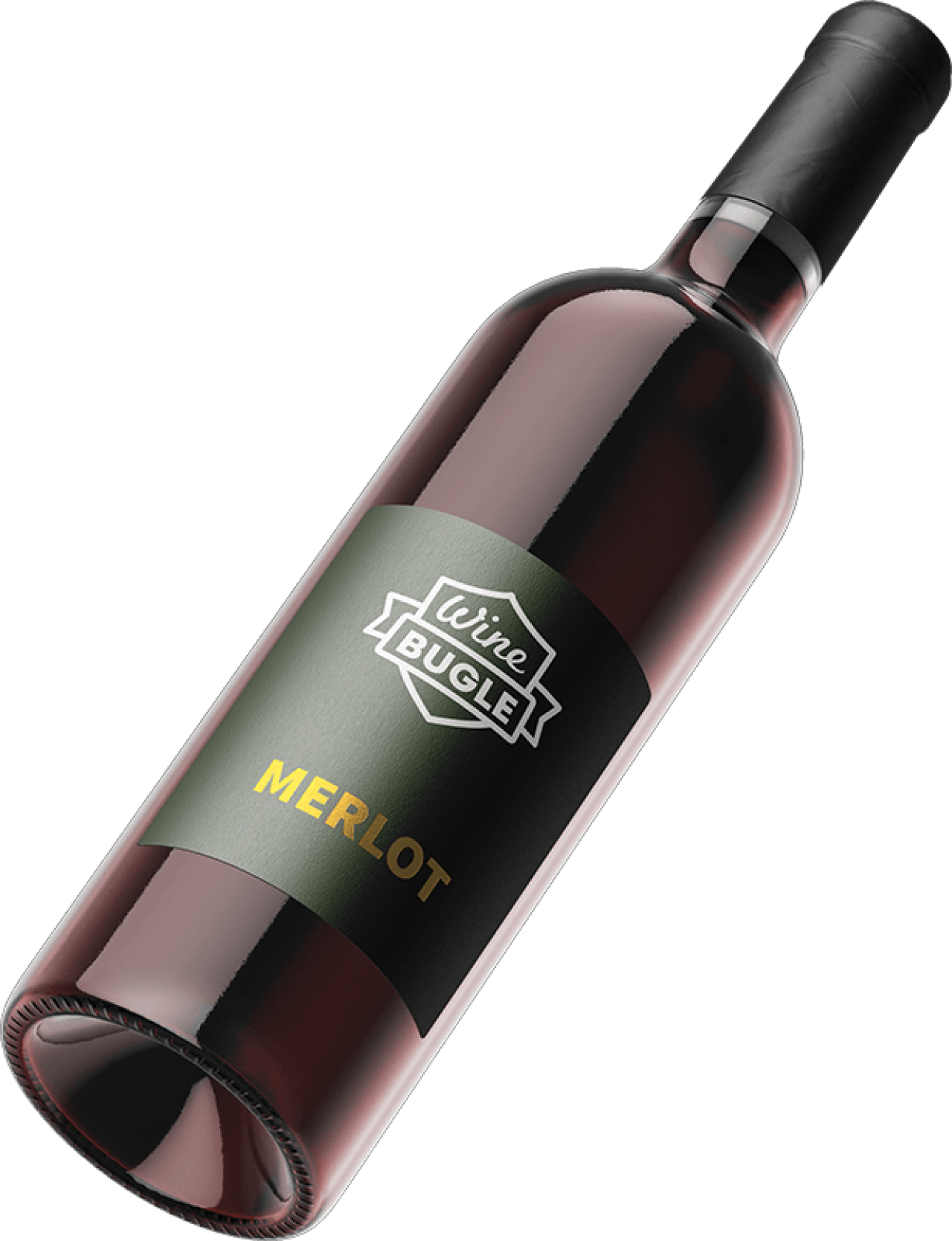Origins of Merlot grape
Merlot is a French red grape variety originating from the Gironde department in the Bordeaux region. It was already known at the end of 1700, but its name appeared for the first time in 1824 in a treatise on the wines of Médoc. The name Merlot seems to derive from the fact that its sweet berries are highly appreciated by blackbirds (blackbird translates in french as 'merle').
Merlot can be vinified alone or in blend, in red or rosé. It is often blended with Cabernet Sauvignon and Cabernet Franc, to produce the prestigious Bordeaux wines. Indeed, Merlot is inextricably linked to Cabernet Sauvignon, as these two vines integrate perfectly: Merlot guarantees robustness and a fruity note, Cabernet gives elegance and longevity to the wine.
Where it is grown
Merlot is grown all over the world and is one of the most popular grapes in Europe.
In France, the most prestigious appellation is undoubtedly Pomerol, home of some extraordinary Merlots including those produced by the great Château Petrus and Château Le Pin.
It arrived in Italy in 1880, in Friuli Venezia Giulia, and from there it spread to Veneto and Trentino Alto Adige. In these regions it has found very favorable environmental conditions. Today Merlot is grown throughout Italy and is vinified with remarkable results, both alone and in blends with famous native vines (for example Sangiovese in Tuscany).
It is widely cultivated with excellent results in America and Australia.
Flavor and Style
The wines obtained from Merlot grapes are velvety, intense, and full with a beautiful dark ruby color, which tends to become garnet along the edge with aging.
On the nose, Merlot shows a captivating bouquet of red fruit, with blueberries, black currant, plum, rhubarb and cherry, followed by violets, and typical notes of humus. When young, it often displays herbaceous aromas, including mint, thyme, oregano, and a balsamic note that fades into pine. The characteristic that makes it easily recognizable is the herbaceous base note that marries wonderfully with the warmth of the fruit.
On the palate, it is round, deep, and juicy with hints of blackberries and cherries. The tannins are always present but velvety and the herbaceous and earthy notes create a layered complexity interspersed with a pleasant fruity pleasure.
Softness, considered by many to be its main characteristic, accentuated by the passage in wood, especially in barriques, has often been dilated to the extreme, especially in the blends, to mellow the roughness of other grape varieties. This approach, aimed at the production of consumer-friendly wines, has contributed to fueling its reputation as an easy wine, penalizing it.
Merlot food pairings
Merlot is extremely versatile in terms of combinations. It is intense, round, and velvety and can pair succulent and tasty dishes. It is a classic match for pork ribs, roast beef, pulled pork, meatloaf, empanadas, and burgers, but it also goes very well with lasagna, any pasta with meat or mushroom sauces, eggplant Parmesan, and medium-aged cheeses.
